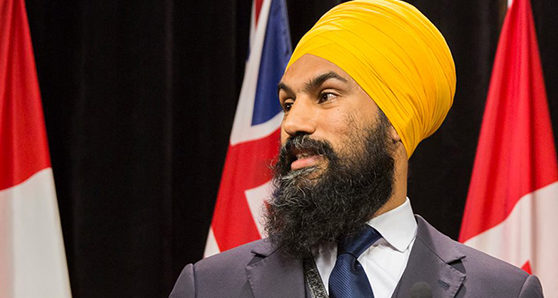 The brutish mother of all federal elections is (mercifully) nearing its conclusion. But a few twists and turns are still possible, as the leader of the third party recently showed us.
The brutish mother of all federal elections is (mercifully) nearing its conclusion. But a few twists and turns are still possible, as the leader of the third party recently showed us.
The Tories are ahead of the Liberals in most opinion polls, albeit by a narrow margin of one to two per cent. The former is sitting in the low to mid-30’s in popular support, while the latter is in the high 20’s to low 30’s. The NDP has surged into the low 20’s for the first time, with the Greens sitting around nine to 10 per cent, the Bloc Quebecois up to six per cent and the People’s Party of Canada between one and three per cent.
It should be obvious to most readers who I’m endorsing: Andrew Scheer and the Tories. If he wins, I believe he’ll make a fine Prime Minister.
Assuming Scheer gets that chance.
The Westminster model of government that Canada uses has a small component that many people either don’t know or tend to overlook. If a majority government is beaten in an election by a party that doesn’t win a majority of seats, or is reduced to a minority with the most seats in Parliament, it has the right to stay in power and attempt to build a coalition.
If Scheer doesn’t win an outright majority on Oct. 21, Justin Trudeau’s Liberals must build a formal or working coalition with some of the other parties post haste. If they succeed and maintain the confidence of the House of Commons, he will remain PM.
This political strategy doesn’t always work. In 2017, former B.C. Liberal Premier Christy Clark was reduced to a one-seat minority government. She unsuccessfully tried to form a coalition with Andrew Weaver’s Greens, who had three seats. The Greens signed a supply agreement with John Horgan’s NDP, and defeated Clark in a motion of a non-confidence after the Throne Speech. Horgan was then asked to become the new Premier.
A similar scenario could play out with Trudeau. The major difference is there are four left-leaning federal parties: Liberals, NDP, Greens and Bloc. With enough seats between them, they could form a coalition to keep Scheer out of power.
Hold on. Trudeau’s blackface/brownface controversy either disgusted or disappointed many Canadians. One of them was federal NDP leader Jagmeet Singh, who made a heartfelt video that was more personal than political. Even though his natural political ally would be the Liberals, how could he align with Trudeau after this?
Well, he just might.
Asked by a reporter about working with other parties this past Sunday, he said, “Oh absolutely, because we’re not going to support a Conservative government. We’re going to fight a Conservative government, we’re gonna (sic) fight it all the way. So we’re ready to do whatever it takes.”
It’s a preposterous statement to make, especially with his party’s support increasing like, in pollster Nik Nanos’s words, a “freight train.” It could kill the NDP’s momentum, too. Unless there’s another part to this equation … and I believe there is.
Sure, Singh’s statement could be genuine. The NDP and Tories have almost nothing in common, from political ideology to economic vision. A formal coalition would be impossible, and a working coalition seems unattainable.
But the language he used tells a different story. I’ve been in this game long enough to know the door hasn’t completely closed on this option – and his public statement could be diametrically opposed to his private strategy.
The NDP leader knows he’s not going to win this election. He also knows his party is catching up to the Liberals in popular support, and they could meet in the middle before election day. This doesn’t necessarily translate into many more seats, but it could happen. He could finish a very strong third or leapfrog the Liberals and become the second-largest party.
If the latter happens, the opposition parties (including the Liberals) would have to make a coalition with the NDP to prevent Scheer from taking power. This would make Singh Canada’s first social democratic Prime Minister.
If the former happens, he could briefly reverse course and prop up Scheer as prime minister for six to 12 months. It wouldn’t be a formal or working coalition, but an informal agreement to create mutually beneficial policies. That’s how Stephen Harper essentially ran his two minority governments in 2006 and 2008 – piece by piece, and issue by issue.
For Singh, it would be the best of both worlds. He’s not “supporting” a Tory government, and the agreement allows him to keep up the “fight” for his progressive policies.
Could this strategy succeed? Absolutely.
Could this strategy backfire? Big time.
Either way, it’s another twist and turn in an election that has had far too many of them already.
Michael Taube, a Troy Media syndicated columnist and Washington Times contributor, was a speechwriter for former prime minister Stephen Harper. He holds a master’s degree in comparative politics from the London School of Economics.
The views, opinions and positions expressed by columnists and contributors are the author’s alone. They do not inherently or expressly reflect the views, opinions and/or positions of our publication.


